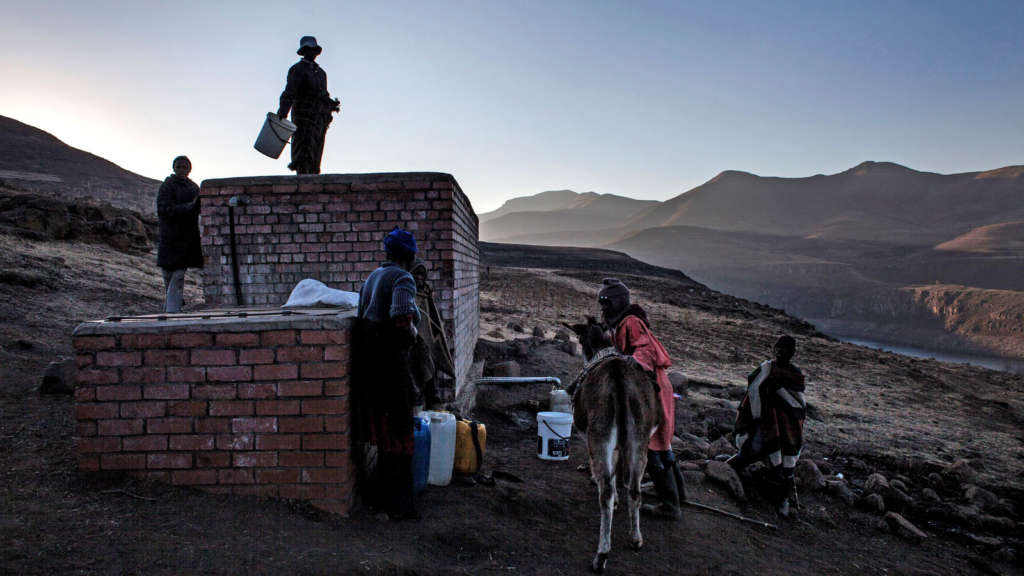In tiny Lesotho, a landlocked kingdom in southern Africa, about one-third of its estimated two million people spent much of the past two years in danger of starving because of the lingering effects of a drought. That is just the latest woe afflicting this cursed nation, and just one example of how fragile the future seems for Africa, large parts of which face the prospect of new famine and, in consequence, further catastrophic displacement within and among their growing populations.
More than 40 years ago, I made Lesotho the centerpiece of a book, “The Alms Race,” that explored why so many development projects kept failing. I chose it because in 1974 it received more development aid per capita than any other nation.
It could also have been voted most likely to vindicate Thomas Malthus’s warning in 1798 that human numbers would inevitably outrun the resources on which our lives depend. Today, Lesotho’s experience since the 1970s is an even stronger case study of what happens when development plans ignore the reality that such efforts can be a recipe for exploding human numbers.
The kingdom’s sad history also offers an urgent, cautionary tale of how rapid population growth can nullify development efforts that might otherwise let an emerging nation endure periods of abnormal weather.
Now, as Lesotho’s story is being retold in many of the 17 other African nations suffering drought, the Trump administration in particular should pay heed to what Lesotho can teach us. Instead, it has announced that the United States will cut its annual contribution to the United Nations Population Fund, which promotes family planning. That reckless move — followed by the even more reckless withdrawal of the United States from the Paris climate agreement — could only increase the growing number of desperate migrants who for decades have been fleeing famine and war in too many corners of the globe.
Even with only 1.2 million inhabitants in 1974, Lesotho’s leaders saw the country was overpopulated. A 1966 British Colonial Office study estimated that the land could support 400,000 people at best — a number Lesotho had reached by 1911. The country had few resources, and erosion was carrying away vast amounts of topsoil while an annual population increase of about 2 percent created more mouths to feed. Lesotho desperately needed access to contraception, but aid organizations avoided getting involved because many Africans then saw birth control as a conspiracy of the rich to keep population numbers in check.
What’s happened since? On the surface, Lesotho could seem to be a demographic success story. True, its population has doubled, but its growth rate has fallen and now is flat.
This is not the typical “demographic transition” traceable to improved incomes. It is traceable to AIDS. The average life span of about 50 years, the second lowest anywhere, is roughly the same as it was 45 years ago. The rate of H.I.V. infection remains among the world’s highest, with nearly 23 percent of adults on antiretroviral medicines in 2014.
That last statistic points to the reason the kingdom has not completely collapsed. Foreign donors have provided many of the medicines and medical facilities that keep H.I.V. from doing its worst. Back in 1974, Lesotho was a ward of the international community, dependent on development agencies and NGOs for many essentials. With the amount of aid having waxed and waned, that remains true today.
Even in 1974, many development experts knew their programs might worsen Lesotho’s population pressures, but hoped in vain that economic growth would outweigh the burden. With only 7 percent of reproductive-age women having access to contraception in the 1970s, Lesotho got its population explosion. By the 1990s, the annual growth rate had soared to 2.75 percent. Belatedly, the government acknowledged the need for family planning, but other barriers impeded it.
During much of Lesotho’s history, huge numbers of working-age men (40 percent in 1974) migrated to toil in South African mines. Many refused to let their wives use contraception for fear that the women would cheat on them during their absences. Moreover, the men’s itinerant lives gave the families incentive to have more boys, to help with the livestock and fields at home.
Over the years, dwindling mine jobs, urbanization, more aggressive outreach and fear of H.I.V. slowly increased use of contraception to 16 percent in 1998, and close to 60 percent in 2015.
(The New York Times)
